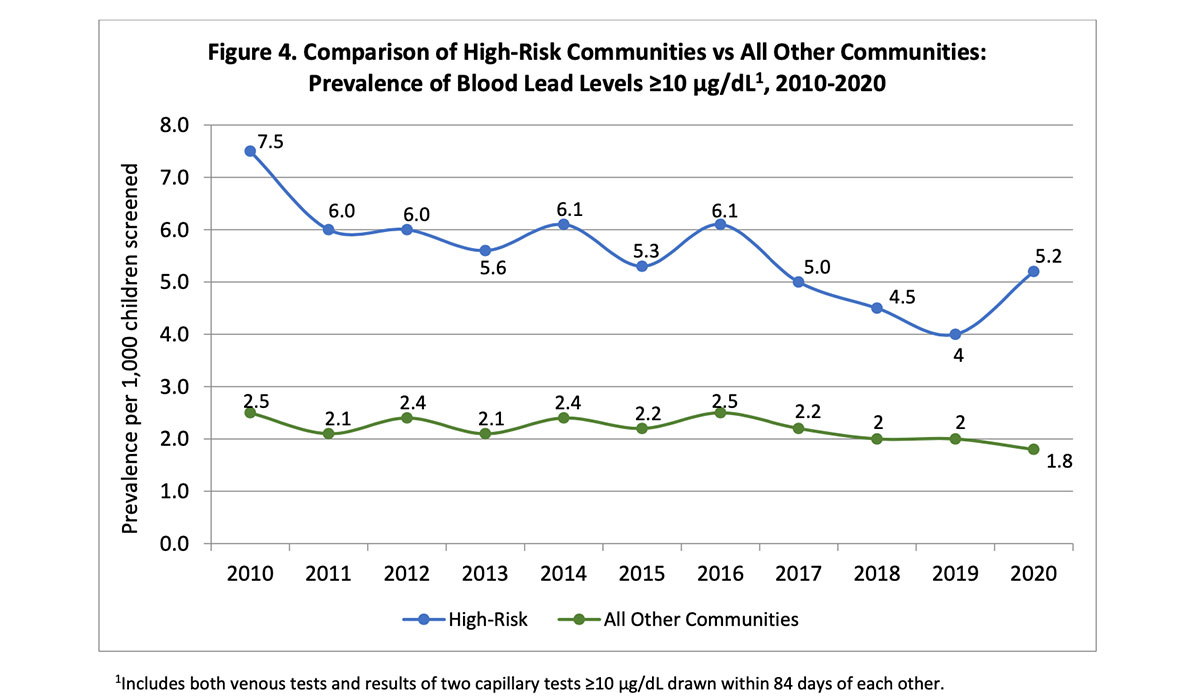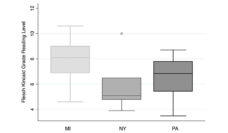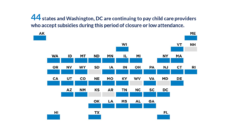My parents live in a historic home outside of Boston, Massachusetts. Like 71% of Massachusetts homes, it was built before lead paint was banned in 1978. Because no children currently live in the house, lead abatement is not mandatory. But the grandkids visit at least once a year.
Massachusetts has the third oldest housing stock in the country, making lead exposure at home a significant risk. Lead poisoning prevalence among children in Massachusetts was declining each year since lead exposure regulations became more stringent in 2017. Then COVID-19 hit. From 2019 to 2020, lead poisoning (blood lead levels over 10 micrograms per deciliter) increased slightly from 0.26% to 0.28%. But most of the increase only happened in certain communities.
Each year the Massachusetts Department of Public Health identifies “high-risk” communities for childhood lead poisoning based on rates of newly poisoned children, the age of housing, and income levels. In 2020, 17 high-risk communities were identified, including Boston. The figure shows how childhood lead poisoning levels in those high-risk communities (in blue) increased notably from 2019-2020. Levels continued to decrease in other communities (green).
Why did lead poisoning increase in some Massachusetts communities while continuing to decrease in others? If young children spent more time in homes with lead-based paint, that could have increased exposure. Reduced screening rates due to stay-at-home orders also could have slowed the early identification of lead exposures in communities that needed it most. Screening levels have largely recovered since the 2020 decline, but problems with access to testing disproportionately impact Black children, immigrant, and refugee children, who are more likely to have elevated blood lead levels but may not have the necessary testing done.
My parents have taken proactive measures to de-lead their home. They have stripped lead paint and repainted windowsills and trim. But these measures are expensive; de-leading a Massachusetts home costs about $17,000 on average. MassHousing’s Get the Lead Out loan program offers substantial financial assistance for lead abatement. But disparities remain.
Databyte via the 2020 Annual Childhood Lead Poisoning Surveillance Report, Massachusetts Department of Public Health Childhood Lead Poisoning Prevention Program.














